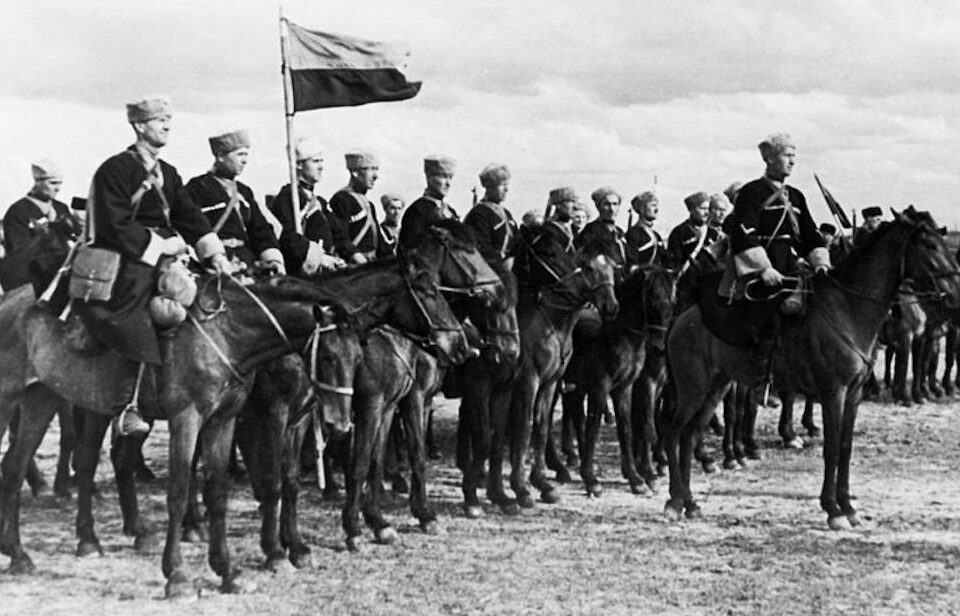The repatriation of Lienz Cossacks following the Yalta Conference is considered by many to be a massive betrayal by the United Kingdom. Despite being aware of the dangers the Cossacks faced upon returning to the Soviet Union, the British Army aided in their transport, essentially sealing their fates.
Background on the Cossack population
The Cossacks are a group of ethnic Russians and Ukrainians who primarily derive from southern Ukraine. Known for their horsemanship, colorful military uniforms and abilities with a saber, the majority were loyal to the Romanov family. As such, they were widely viewed as a privileged military class.
Their loyalty to the tsar and “White Russia” meant the Cossacks were targeted during the 1917 Bolshevik Revolution. The uprising eventually led to the first Russian Civil War. When it became evident the Soviets would emerge victorious, many Cossacks fled to Central and Western Europe, where they joined anti-Communist organizations.
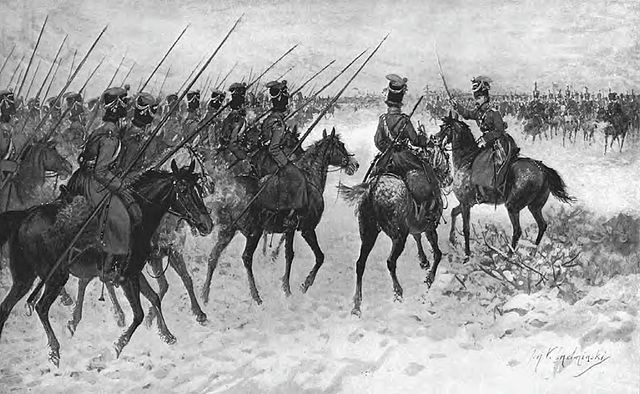
Those who remained were subjected to more than a decade of repression, the latter years of which are known as the Great Terror. They endured forced cultural assimilation, saw the repression of the Russian Orthodox Church and faced deportation. The Terek, Semirechye and Ural had their lands portioned, effectively displacing them. This was one of many factors that led to the Soviet Famine of 1932-33.
Cossack defection to the German Army
Joseph Stalin introduced Cossacks into the Red Army after Russia’s poor showing during the Winter War. However, just 60 days after the start of the Second World War, their unit – the 436th Infantry commanded by Maj. Ivan Nikitich Kononov – defected to the Germans, hoping to escape Soviet control.
The German attack on the Eastern Front during Operation Barbarossa in June 1941 resulted in an estimated four million Red Army soldiers being taken prisoner. By August 1941, 70,000 Cossacks had switched sides, along with other Soviet citizens, with another 50,000 joining them by October 1942.
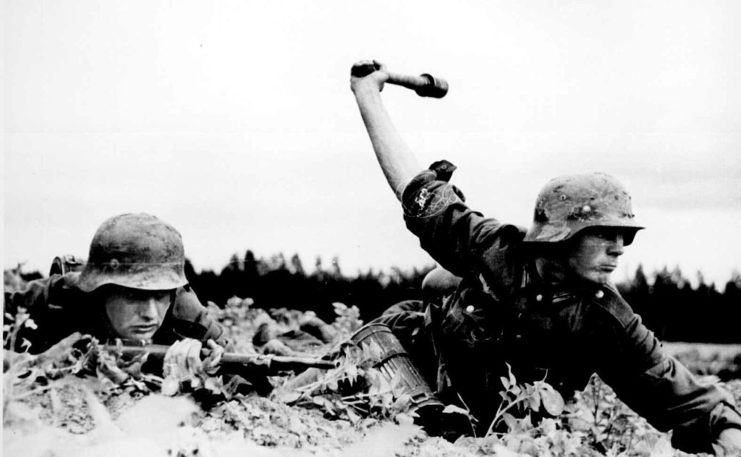
While German leaders initially showed little interest in having the Cossacks fight on the Eastern Front, two felt they could be useful: Reich Minister Alfred Rosenberg and cavalry officer Helmuth von Pannwitz. von Pannwitz was aware of the Cossacks’ struggles in Russia and felt he could use their hatred of Stalin to the German Army’s advantage.
After obtaining approval from German Field Marshal Paul Ludwig Ewald von Kleist, von Pannwitz got to work creating his new unit. He recruited defectors and German prisoners of war (POWs), and incorporated traditions, such as wearing religious symbols. He even assigned Orthodox Russian chaplains to the regiments. They were issued Cossack weaponry – TT-30 automatic pistols and shashka sabers – and were allowed to wear Kubanka fur caps and black burqa capes.
Cossack forces in battle
The job of von Pannwitz’s cavalry was to free up German troops to fight elsewhere. They first saw action in September 1943 during Operation Konstantin, occupying areas previously patrolled by the Italian armed forces.
Later, they were deployed to Bosnia and Croatia to aid in the fight against Josip Broz Tito and his Yugoslavian partisans; Tito had become a threat the Germans couldn’t ignore. They fought his forces over the course of numerous military operations, with the most important being Operation Schach in March 1944. It aimed to capture or kill the Communist revolutionary.
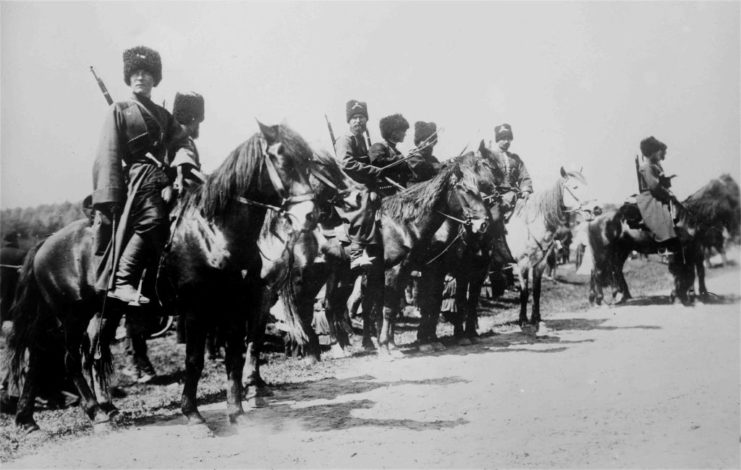
Despite being a band of Soviet defectors, the Cossacks only fought against the Red Army once. On December 25, 1944, the 133rd Soviet Infantry fought the cavalry unit near the River Drava. During this time, other Cossack forces were stationed in northern Italy, fighting against more partisan groups.
While dismissive of the division at first, SS leader Heinrich Himmler wished to form an SS Cossack police unit. When von Pannwitz denied him, he altered the request so the first and second Cossack divisions would regroup under a new name: the SS XV Cossack Cavalry Corps. This meant von Pannwitz gained access to SS supplies without actually making the Cossacks a part of the police force.
The Cossack unit eventually grew to three divisions. On April 28, 1945, the division led by Lt. Gen. Timofey Ivanovich Domanov was approached by Italian officers who insisted they surrender their weaponry and leave. While Domanov refused to hand over their arms, he did lead his troops out of Italy and into Austria. Once there, the Cossacks traveled through the village of Kötschach-Mauthen and settled near the town of Lienz. Their settlement was called Camp Peggetz.
Yalta Conference
The Yalta Conference took place in February 1945 between Stalin, US President Franklin D. Roosevelt and British Prime Minister Winston Churchill.
One issue discussed was “reciprocal repatriation” in regard to liberated Allied prisoners in the Soviet Union and Soviet prisoners serving in the German Army, whom Stalin knew were largely dissident Cossacks. At the time, 100,000 Soviet soldiers had been captured by the Allied forces, while 50,000 British POWs and even more French soldiers were in Russia.
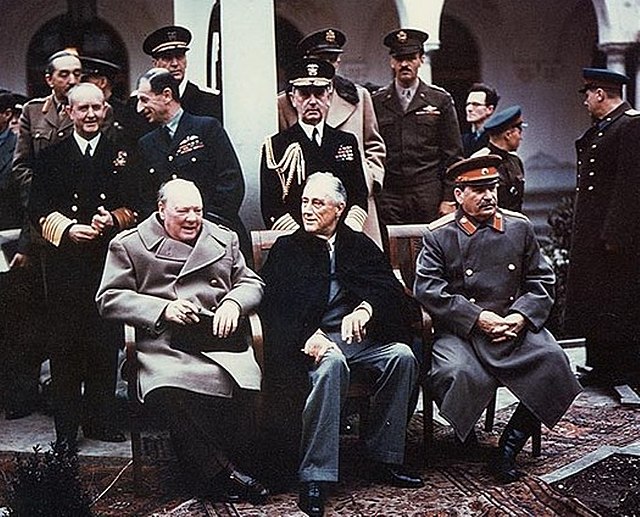
Roosevelt and Churchill agreed to the pact, fearing Stalin would delay or refuse to repatriate Allied prisoners. The agreement read, in part, that all Soviet citizens “liberated by the Allied armies – as soon as possible after their liberation – were to be separated from German prisoners of war and lodged in separate camps” and “situated in camps or other localities to which the Soviet authorities responsible for their repatriation would have immediate access.”
The UK also agreed to transport Soviets taking shelter in the country back to Russia.
Leinz Cossacks surrender to the British Army
On May 28, 1945, the British Army arrived in Lienz to invite the Cossacks to a conference with British officials. They promised everyone in attendance would be returned by 6:00 PM that evening. There was uncertainty among the soldiers, but they were reassured everything was in order.
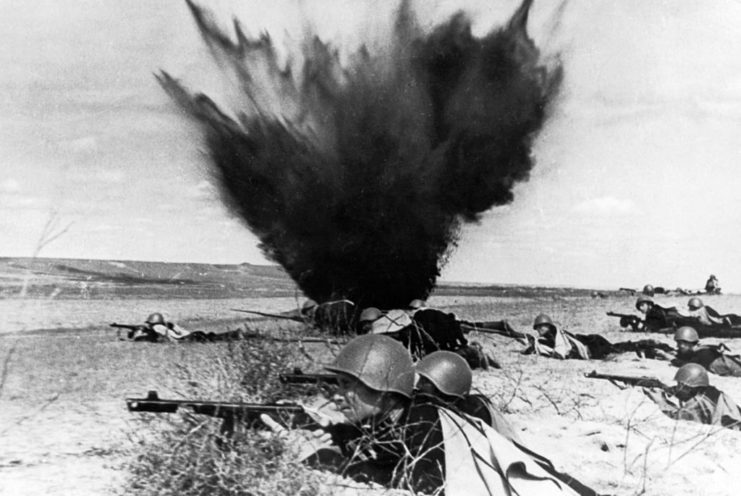
Domanov and other officers traveled to the British 36th Infantry Brigade’s headquarters in Oberdrauburg, where they were told they were being handed over to Soviet authorities. They were placed in a former POW camp near Spital. In a panicked attempt to stymie the NKVD, many tore their insignias from their uniforms and destroyed personal papers. They also fought attempts to load them into trucks, with some jumping out and others opting to end their lives.
Upon reaching Judenburg, the senior officers were transported to Graz, then Baden, just outside of Vienna. From there, they were sent to a Red Army counterintelligence station for interrogation.
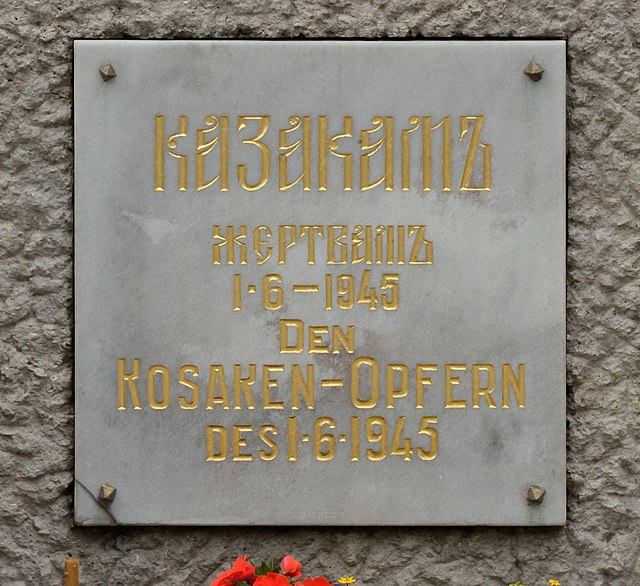
While the seizure was occurring, British officials ordered all NCOs to assemble at the Peggetz encampment by 9:00 AM the next day. The British attempted – and failed – to convince the soldiers their leadership had betrayed them, and they were met with outrage upon informing the cavalry of their seizure.
In all, 22,502 Cossacks were packed into guarded cattle cars and transported to Russia. On the way, many tried to escape into the mountains, but they were hunted down by the British. Others killed themselves before they could be turned over.
Conviction and execution
The fate of the Cossacks at Camp Peggetz was similar to the 20,000 men in von Pannwitz’s XV SS Cossack Cavalry Corps. Between May 9–10, 1945, British SOE officer Charles Hyde Villiers visited the military leader, who surrendered under one condition: that his men not be turned over to the Russians.
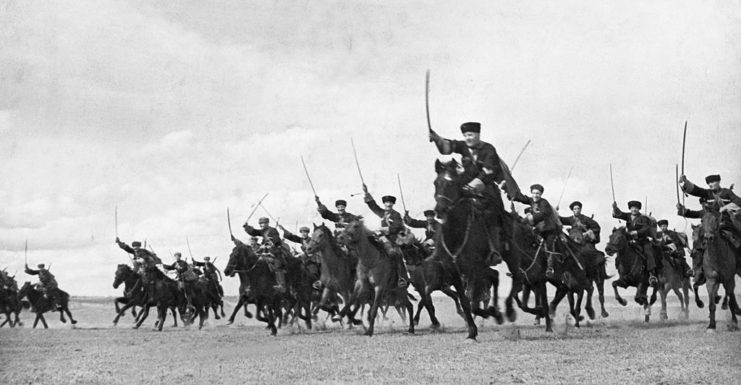
In an attempt to better the odds, von Pannwitz sent a letter to Field Marshal Harold Alexander. After receiving no response, he traveled to the field marshal’s headquarters. There, he was told by a British major that he and his officers needed to surrender their weapons. Days later, they heard the rumor that they were being handed over to the Red Army.
On May 28, von Pannwitz, his men and Domanov’s officers were given to the Soviets. Their final destination was Moscow, where they were given cells at Lubyanka Prison. The majority of Cossack senior officers were tried, convicted and executed for their rebellion against the Soviets, while others were given long prison terms. The most senior, including von Pannwitz, were hanged in the prison’s courtyard on the evening of January 16, 1947.
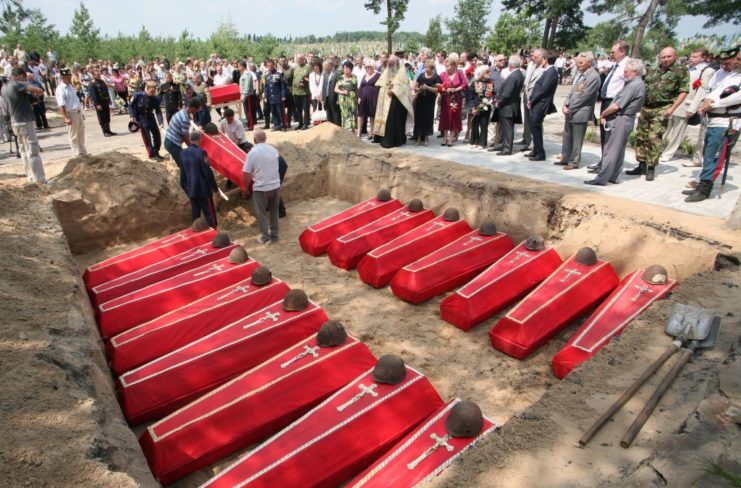
More from us: Iva Toguri D’Aquino: The ‘Tokyo Rose’ Who Tried To Help The Allies
Over two million Russians were forcibly repatriated to the Soviet Union after the war. Among them were 50,000 Cossacks. Many were denied political asylum by Allied countries for fighting alongside the Germans. Despite being brought to trial, few were actually considered war criminals, including von Pannwitz, whose conviction was overturned after the fall of the Soviet Union in 1991.
